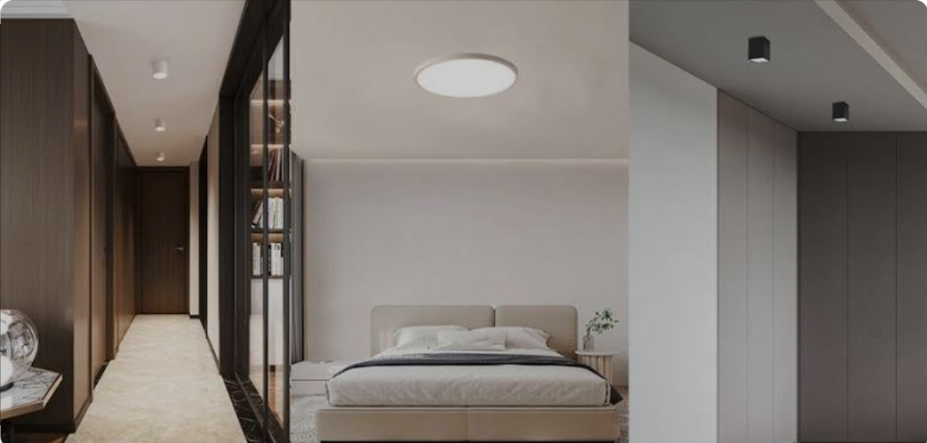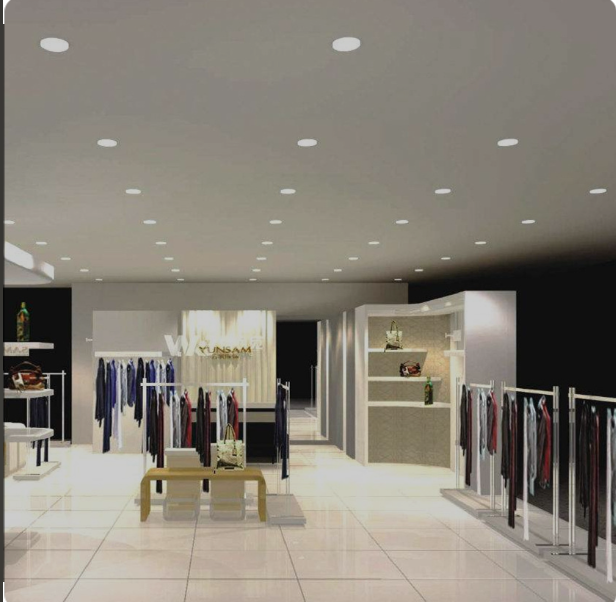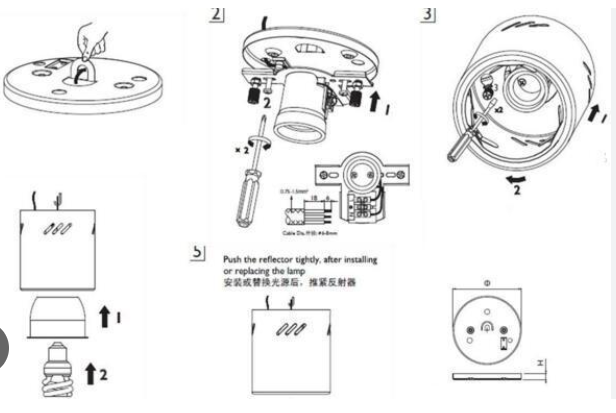Lighting plays a crucial role in interior design, affecting both aesthetics and functionality. Two primary types of lighting fixtures—surface-mounted (or "surface-mount") and recessed (or "flush-mount")—serve different purposes depending on the architectural context, design preferences, and practical requirements. Understanding their differences helps in making informed decisions for residential, commercial, and industrial lighting applications.
This article explores the distinctions between surface-mounted and recessed lighting, focusing on their installation methods, visual impact, suitability for various spaces, energy efficiency, and maintenance considerations.
1. Definition and Installation Differences
Surface-Mounted Lighting

Surface-mounted fixtures are installed directly onto ceilings or walls without being embedded. They protrude visibly and are secured using mounting brackets or screws. Common examples include:
Ceiling lights (e.g., flush mounts, semi-flush mounts, track lighting)
Wall sconces
Pendant lights (though some may hang lower)
Installation Process:
Requires minimal structural modification.
Wiring is typically concealed within a canopy or cover plate.
Suitable for rooms with shallow ceiling cavities or concrete ceilings where recessed lighting isn’t feasible.
Recessed Lighting

Recessed fixtures are installed inside ceilings, walls, or floors, creating a seamless, built-in appearance. Key components include:
Housing (the hidden structural frame)
Trim (the visible decorative rim)
Bulb/LED module
Installation Process:
Requires sufficient ceiling depth (usually 4–8 inches).
Involves cutting holes into the ceiling or wall.
Wiring runs through the ceiling cavity.
Best for modern, minimalist designs where a clean look is desired.
Aesthetic and Design Impact
Surface-Mounted Lighting: Bold and Decorative
Visibility: Fixtures are prominent and can serve as focal points.
Style Flexibility: Available in various designs (vintage, industrial, contemporary).
Ceiling Height Impact: Can make low ceilings feel even lower if bulky.
Best For:
Traditional or eclectic interiors.
Rooms where lighting is part of the decor (e.g., chandeliers in dining rooms).
Recessed Lighting: Sleek and Minimalist
Discreetness: Blends into the ceiling, providing ambient light without visual clutter.
Modern Appeal: Ideal for contemporary, Scandinavian, or minimalist designs.
Space Enhancement: Makes ceilings appear higher.
5. Installation and Maintenance Considerations
Factor | Surface-Mounted | Recessed |
Ease of Installation | Easier (no cutting required) | More complex (requires ceiling penetration) |
Retrofitting | Simple to replace or upgrade | Difficult if ceiling structure doesn’t support housing |
Maintenance | Accessible for bulb changes | May require ladder work to access trim/housing |
Heat Dissipation | Better airflow around fixture | Can trap heat if not properly insulated |
Ceiling height & room size (recessed for low ceilings, surface for high ceilings).
Acoustic Implications
Surface-mounted fixtures:
May help absorb sound in rooms with hard surfaces
Can interfere with ceiling-mounted sound systems
Typically have no impact on ceiling acoustics
Recessed fixtures:
Can compromise ceiling sound insulation
May create sound leakage between floors
Require special acoustic-rated housings in sound-sensitive spaces
Thermal Considerations
Surface-mounted:
Generally better heat dissipation
Less likely to overheat in confined spaces
More suitable for environments with temperature extremes
Recessed:
Require proper thermal protection
Need adequate clearance from insulation
IC-rated housings needed for insulated ceilings
Hybrid Approaches and Combining Both Types
Many successful lighting designs incorporate both surface-mounted and recessed fixtures to leverage the strengths of each:
Using recessed lights for general ambient lighting while adding surface-mounted pendants for task lighting
Combining recessed accent lights with decorative surface-mounted fixtures as focal points
Installing surface-mounted fixtures in areas without ceiling access while using recessed lighting elsewhere
Creating layers of light with recessed base lighting and surface-mounted decorative elements.

Conclusion: Choosing the Right Option
The decision between surface-mounted and recessed lighting depends on multiple factors including ceiling height, architectural style, functional needs, budget, and personal aesthetic preferences. Surface-mounted fixtures offer decorative flexibility and easier installation, making them ideal for spaces where lighting serves as a design element. Recessed lighting provides a clean, integrated look perfect for contemporary spaces and precise lighting control.
Ultimately, many spaces benefit from a thoughtful combination of both approaches, creating layered lighting that addresses various needs while enhancing the overall design. By understanding the distinct advantages and ideal applications of each type, homeowners and designers can make informed decisions that result in beautiful, functional lighting solutions tailored to each unique space.
Surface-Mounted Lighting
Installation: Mounted directly onto the ceiling or wall, with fixtures fully exposed.
Recessed Lighting
Installation: Embedded into ceilings/walls, with only the trim visible.



